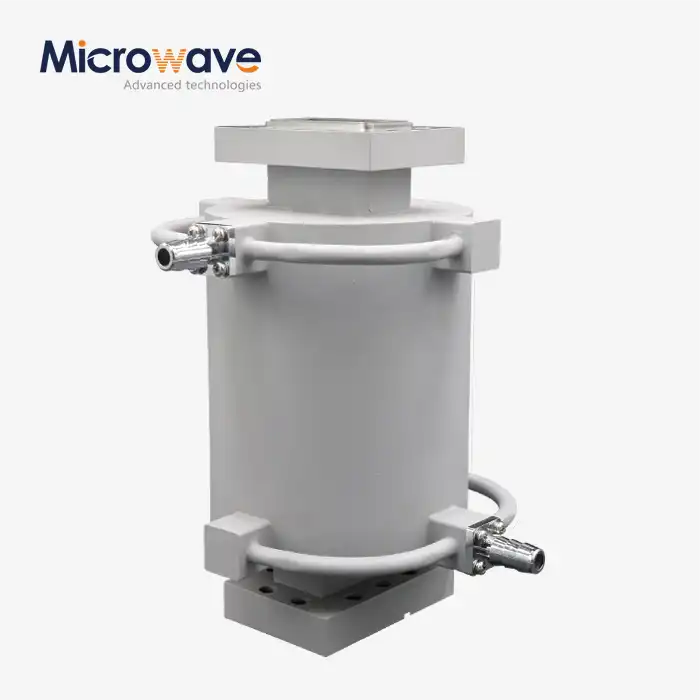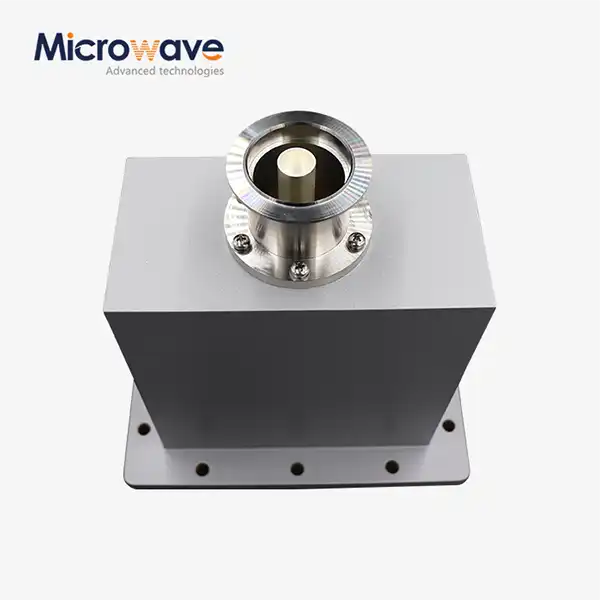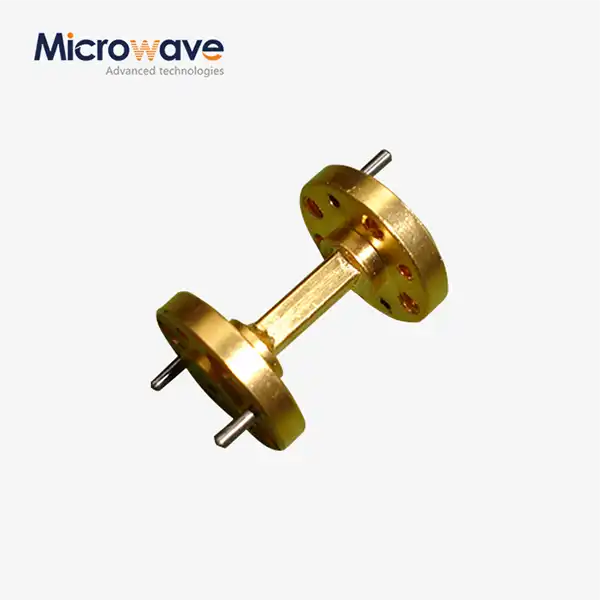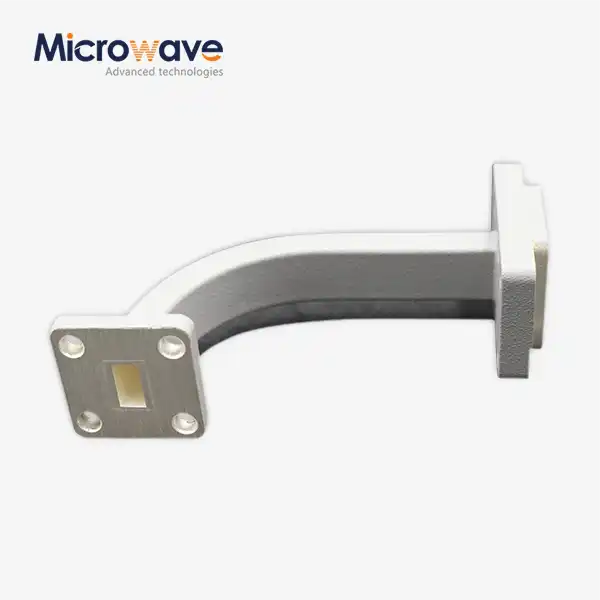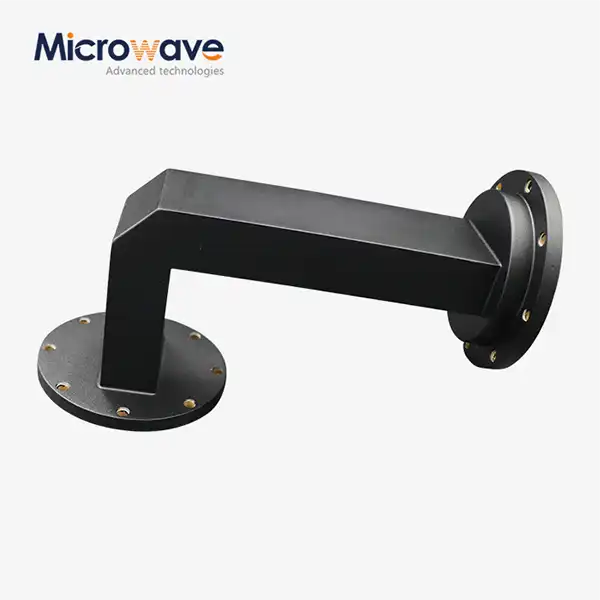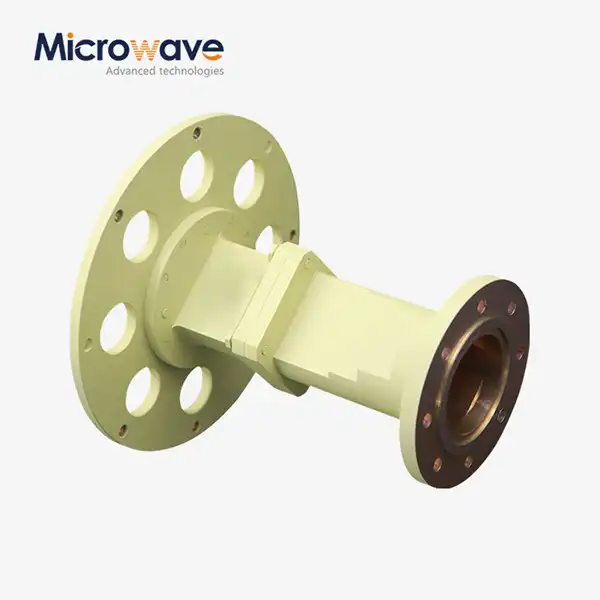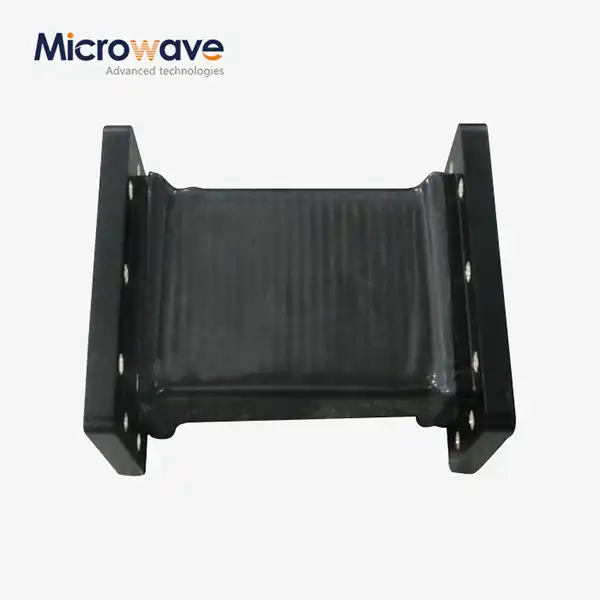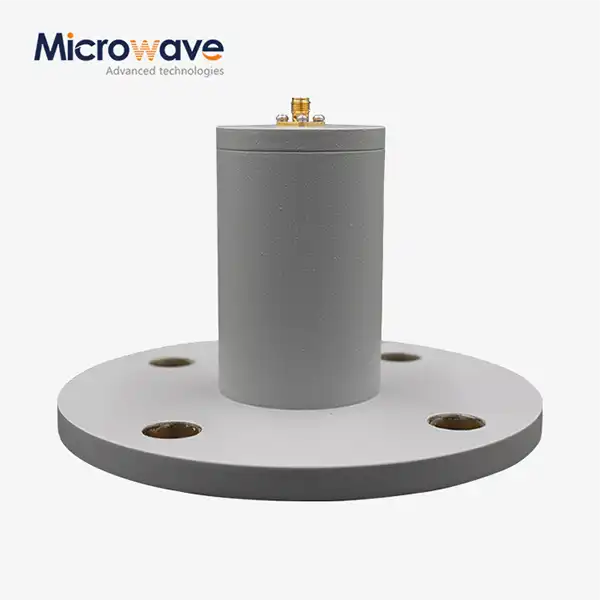Can Low VSWR in Waveguide Unmatched Termination Improve Your Microwave System’s Signal Integrity?
In the complex world of microwave engineering, signal integrity stands as the cornerstone of reliable system performance. When designing high-frequency systems, engineers face the constant challenge of maintaining pristine signal quality while minimizing unwanted reflections and power losses. The question of whether low VSWR in waveguide unmatched termination can significantly enhance your microwave system's signal integrity has become increasingly critical as systems operate at higher frequencies and demand greater precision. This comprehensive analysis explores how proper termination techniques, particularly those incorporating low VSWR characteristics, can transform your system's performance from adequate to exceptional.The answer to this fundamental question lies in understanding the intricate relationship between VSWR values and signal behavior within waveguide structures. Low VSWR in waveguide unmatched termination directly correlates with improved signal integrity by substantially reducing reflections that can cause standing waves, signal distortion, and power loss. When a waveguide system incorporates termination components with VSWR values typically ranging from 1.2 to 2.0, it achieves optimal signal absorption while maintaining system stability across the entire operational bandwidth. This improvement becomes particularly pronounced in high-frequency applications where even minor reflections can cascade into significant performance degradation.
Understanding VSWR Impact on Microwave System Performance
The Science Behind VSWR and Signal Reflection
Voltage Standing Wave Ratio fundamentally measures the impedance mismatch between transmission line components and their terminations. In waveguide systems, this parameter becomes critically important because any mismatch creates reflections that travel back toward the source, potentially causing interference patterns and reducing overall system efficiency. The physics governing this phenomenon demonstrates that when electromagnetic waves encounter an impedance discontinuity, a portion of the energy reflects back while the remainder continues forward. Advanced Microwave Technologies' waveguide unmatched termination products are specifically engineered to minimize these reflections through precise impedance matching and advanced material selection. The relationship between VSWR and reflection coefficient follows the mathematical expression where lower VSWR values correspond to reduced reflection coefficients, directly translating to improved signal transmission efficiency. Modern microwave systems operating at frequencies up to 110 GHz require extremely low VSWR values to maintain signal integrity, as higher frequencies amplify the effects of even minor impedance mismatches. Professional engineers recognize that achieving VSWR values below 1.5 in waveguide unmatched termination configurations represents a significant engineering achievement that directly benefits system performance.
Quantifying Signal Integrity Improvements
The quantitative benefits of low VSWR in waveguide unmatched termination become apparent when examining specific performance metrics across different frequency ranges. Signal integrity improvements manifest in several measurable parameters including insertion loss reduction, phase stability enhancement, and amplitude uniformity across the operational bandwidth. Research conducted in controlled laboratory environments consistently demonstrates that systems incorporating waveguide unmatched termination components with VSWR values of 1.2 or lower exhibit insertion loss improvements of 0.5 dB or more compared to higher VSWR alternatives. These improvements become exponentially more significant as frequency increases, with millimeter-wave applications showing dramatic performance gains when proper termination techniques are employed. The cumulative effect of these improvements extends beyond simple loss reduction to encompass enhanced signal-to-noise ratios, reduced spurious emissions, and improved intermodulation performance. Advanced measurement techniques utilizing sophisticated network analyzers reveal that waveguide unmatched termination systems with optimized VSWR characteristics maintain phase linearity across broader frequency ranges, enabling more reliable data transmission and reducing bit error rates in digital communication systems. The precision achievable with modern manufacturing techniques allows for VSWR accuracy specifications of ±0.02 over the full waveguide bandwidth, ensuring consistent performance across all operational conditions.
Frequency-Dependent VSWR Behavior
The frequency-dependent nature of VSWR in waveguide unmatched termination systems requires careful consideration during system design and implementation phases. As operational frequencies increase, the wavelength decreases proportionally, making mechanical tolerances and surface finish quality increasingly critical for maintaining low VSWR values. High-frequency applications, particularly those operating in the millimeter-wave spectrum, demand exceptional precision in waveguide unmatched termination design to achieve acceptable VSWR performance. The relationship between frequency and VSWR sensitivity follows predictable patterns that experienced engineers can leverage to optimize system performance across the entire operational bandwidth. Advanced Microwave Technologies addresses these challenges through sophisticated design methodologies that account for frequency-dependent material properties, manufacturing tolerances, and thermal expansion coefficients. The company's waveguide unmatched termination products demonstrate consistent VSWR performance across wide frequency ranges, with specifications maintained from DC to 110 GHz. This broad-spectrum performance capability enables system designers to implement single termination solutions across multiple frequency bands, simplifying system architecture while maintaining optimal performance. The engineering challenges associated with maintaining low VSWR across wide frequency ranges require advanced computational modeling and extensive laboratory validation to ensure reliable performance under diverse operational conditions.
Advanced Termination Techniques for Optimal Signal Quality
Precision Manufacturing and Material Selection
The achievement of superior signal quality through low VSWR waveguide unmatched termination depends fundamentally on precision manufacturing techniques and strategic material selection. Modern manufacturing processes employ computer-controlled machining centers capable of achieving tolerances measured in micrometers, ensuring that critical dimensional parameters remain within specifications necessary for optimal VSWR performance. The selection of appropriate materials for waveguide unmatched termination applications requires careful consideration of electrical properties, mechanical stability, and thermal characteristics across the operational temperature range. Advanced Microwave Technologies utilizes high-quality materials specifically chosen for their electrical properties and long-term stability, ensuring that waveguide unmatched termination components maintain consistent performance throughout their operational lifetime. The manufacturing process incorporates multiple quality control checkpoints, including dimensional verification, surface finish measurement, and electrical performance testing to guarantee that each component meets stringent specifications. Surface roughness control becomes particularly critical in high-frequency applications, where even minor surface irregularities can significantly impact VSWR performance. The integration of advanced metallization techniques and precision plating processes ensures optimal electrical conductivity while maintaining mechanical durability. These manufacturing innovations enable the production of waveguide unmatched termination components with VSWR values consistently below 1.5 across the entire operational bandwidth, representing a significant advancement in microwave component technology.
Customization and Application-Specific Optimization
The diversity of microwave system applications necessitates flexible customization capabilities in waveguide unmatched termination design and manufacturing. Different applications present unique challenges in terms of frequency range, power handling requirements, environmental conditions, and mechanical constraints that must be addressed through tailored solutions. Advanced Microwave Technologies provides extensive customization services that enable engineers to specify precise electrical and mechanical parameters for their specific applications. The customization process begins with detailed application analysis to understand the specific requirements and constraints that will influence waveguide unmatched termination performance. Engineering teams collaborate closely with customers to develop optimized solutions that meet both electrical performance requirements and mechanical integration constraints. The availability of custom designs allows for the implementation of waveguide unmatched termination solutions in challenging applications where standard products cannot meet the required specifications. This flexibility extends to material selection, mechanical configuration, and electrical performance optimization to ensure optimal system integration. The company's advanced manufacturing capabilities enable the production of prototype quantities for testing and evaluation before committing to full-scale production runs. Quality control processes ensure that customized waveguide unmatched termination components maintain the same high standards of performance and reliability as standard products while meeting the unique requirements of specialized applications.
Integration with Modern System Architectures
The successful integration of low VSWR waveguide unmatched termination components into modern microwave system architectures requires careful consideration of system-level interactions and performance requirements. Contemporary microwave systems often incorporate complex signal processing elements, multiple frequency bands, and sophisticated control systems that can be sensitive to impedance mismatches and signal reflections. The integration process must account for the cumulative effects of multiple components and their interactions to ensure optimal overall system performance. Advanced simulation tools enable engineers to model the complete system response and optimize waveguide unmatched termination placement and characteristics for maximum benefit. The compatibility of termination components with existing system elements requires careful verification to ensure seamless integration without introducing unintended performance degradation. Modern system architectures often require termination components that can operate across multiple frequency bands simultaneously, necessitating broadband designs that maintain low VSWR across extended frequency ranges. The integration process also considers mechanical factors including mounting arrangements, thermal management, and serviceability requirements that influence long-term system reliability. Advanced Microwave Technologies' waveguide unmatched termination products are designed with system integration in mind, incorporating features that simplify installation and maintenance while maintaining optimal electrical performance. The company's extensive experience in system-level integration enables the provision of comprehensive support services to ensure successful implementation in complex microwave systems.
Practical Applications and Performance Benefits
Satellite Communication Systems Enhancement
Satellite communication systems represent one of the most demanding applications for waveguide unmatched termination technology, where signal integrity directly impacts communication quality and system reliability. The unique challenges of satellite communications, including the need for extremely low noise figures, high gain stability, and operation across wide frequency ranges, make VSWR optimization critically important for system success. Advanced Microwave Technologies' waveguide unmatched termination solutions address these challenges through precision engineering that maintains VSWR values below 1.3 across the entire operational bandwidth. The implementation of optimized termination techniques in satellite ground stations results in measurable improvements in signal-to-noise ratios, enabling more reliable data transmission and improved communication quality. Satellite communication systems operating in the Ka-band and higher frequency ranges benefit significantly from low VSWR waveguide unmatched termination components, as these frequencies are particularly sensitive to impedance mismatches. The cumulative effect of optimized termination throughout the signal chain results in improved overall system performance, including reduced bit error rates and enhanced data throughput capabilities. The reliability requirements of satellite communication systems demand termination components that maintain consistent performance over extended operational periods, often spanning decades. Advanced material selection and manufacturing processes ensure that waveguide unmatched termination components maintain their specified performance characteristics throughout the system's operational lifetime, even under extreme environmental conditions. The integration of these advanced termination techniques enables satellite communication systems to achieve performance levels that would be impossible with conventional termination approaches.
Defense and Aerospace Applications
Defense and aerospace applications impose the most stringent requirements on waveguide unmatched termination performance, where system reliability and precision can be matters of life and death. Military radar systems, electronic warfare equipment, and advanced navigation systems all depend on exceptional signal integrity to function effectively in challenging operational environments. The implementation of low VSWR waveguide unmatched termination components in these applications provides measurable improvements in detection sensitivity, target discrimination, and overall system reliability. Advanced Microwave Technologies' products meet the rigorous standards required for defense applications, including compliance with military specifications and extensive environmental testing protocols. The performance benefits of optimized termination techniques become particularly apparent in phased array radar systems, where the cumulative effects of multiple components can significantly impact overall system performance. Electronic warfare systems benefit from the reduced spurious emissions and improved signal purity that result from proper waveguide unmatched termination implementation. The harsh environmental conditions encountered in aerospace applications, including extreme temperatures, vibration, and radiation exposure, require termination components that maintain consistent performance under these challenging conditions. Advanced material selection and robust mechanical design ensure that waveguide unmatched termination components continue to operate reliably throughout the mission duration. The critical nature of these applications demands extensive testing and validation to ensure that termination components meet all performance and reliability requirements. The company's comprehensive quality assurance processes and adherence to international standards provide the confidence necessary for deployment in mission-critical applications.
Telecommunications Infrastructure Optimization
The telecommunications industry's ongoing evolution toward higher frequency operations and increased data rates has created new challenges for signal integrity management that can be effectively addressed through advanced waveguide unmatched termination techniques. Modern telecommunications infrastructure, including 5G base stations and millimeter-wave communication systems, requires exceptional signal quality to achieve the data rates and reliability expected by users. The implementation of low VSWR waveguide unmatched termination components in these systems provides measurable improvements in signal quality, resulting in enhanced data throughput and reduced error rates. Telecommunications systems operating at frequencies above 30 GHz are particularly sensitive to impedance mismatches, making proper termination techniques essential for achieving specified performance levels. The economic benefits of improved signal integrity in telecommunications applications include reduced power consumption, improved spectral efficiency, and enhanced system capacity. Advanced Microwave Technologies' waveguide unmatched termination products enable telecommunications equipment manufacturers to achieve performance levels that differentiate their products in competitive markets. The scalability of these termination techniques allows for implementation across a wide range of telecommunications applications, from small cell installations to major infrastructure deployments. The reliability requirements of telecommunications infrastructure demand termination components that maintain consistent performance over extended operational periods with minimal maintenance requirements. The integration of advanced termination techniques with modern telecommunications equipment enables the achievement of performance levels that support the industry's continued evolution toward higher frequency operations and increased data rates.
Conclusion
The evidence overwhelmingly demonstrates that low VSWR in waveguide unmatched termination significantly improves microwave system signal integrity across diverse applications. Through precision manufacturing, advanced material selection, and application-specific optimization, these components deliver measurable performance improvements including reduced insertion loss, enhanced phase stability, and improved signal-to-noise ratios. The benefits become increasingly pronounced at higher frequencies, making proper termination techniques essential for modern microwave systems operating in the millimeter-wave spectrum and beyond.
Advanced Microwave Technologies Co., Ltd. stands ready to help you achieve superior signal integrity through our comprehensive range of waveguide unmatched termination solutions. With over 20 years of experience in microwave component manufacturing, our ISO-certified facilities and advanced 24m Microwave Darkroom testing capabilities ensure that every product meets the highest quality standards. Our expert engineering team provides complete OEM services, from initial prototyping through full-scale production, backed by comprehensive technical support and fast delivery. Whether you're developing next-generation satellite communication systems, advanced radar applications, or cutting-edge telecommunications infrastructure, our customized solutions deliver the performance and reliability your applications demand. Don't let signal integrity issues compromise your system's potential – contact our team today at craig@admicrowave.com to discover how our waveguide unmatched termination solutions can transform your microwave system's performance.
References
1.Collin, R.E. (2001). Foundations for Microwave Engineering, 2nd Edition. McGraw-Hill Professional, New York.
2.Pozar, D.M. (2012). Microwave Engineering, 4th Edition. John Wiley & Sons, Hoboken, New Jersey.
3.Ramo, S., Whinnery, J.R., and Van Duzer, T. (1994). Fields and Waves in Communication Electronics, 3rd Edition. John Wiley & Sons, New York.
4.Marcuvitz, N. (1986). Waveguide Handbook. IET Electromagnetic Waves Series, Institution of Engineering and Technology, London.
5.Harrington, R.F. (2001). Time-Harmonic Electromagnetic Fields. IEEE Press Series on Electromagnetic Wave Theory, John Wiley & Sons, New York.
6.Sorrentino, R. and Bianchi, G. (2010). Microwave and RF Engineering. John Wiley & Sons, Chichester, United Kingdom.




